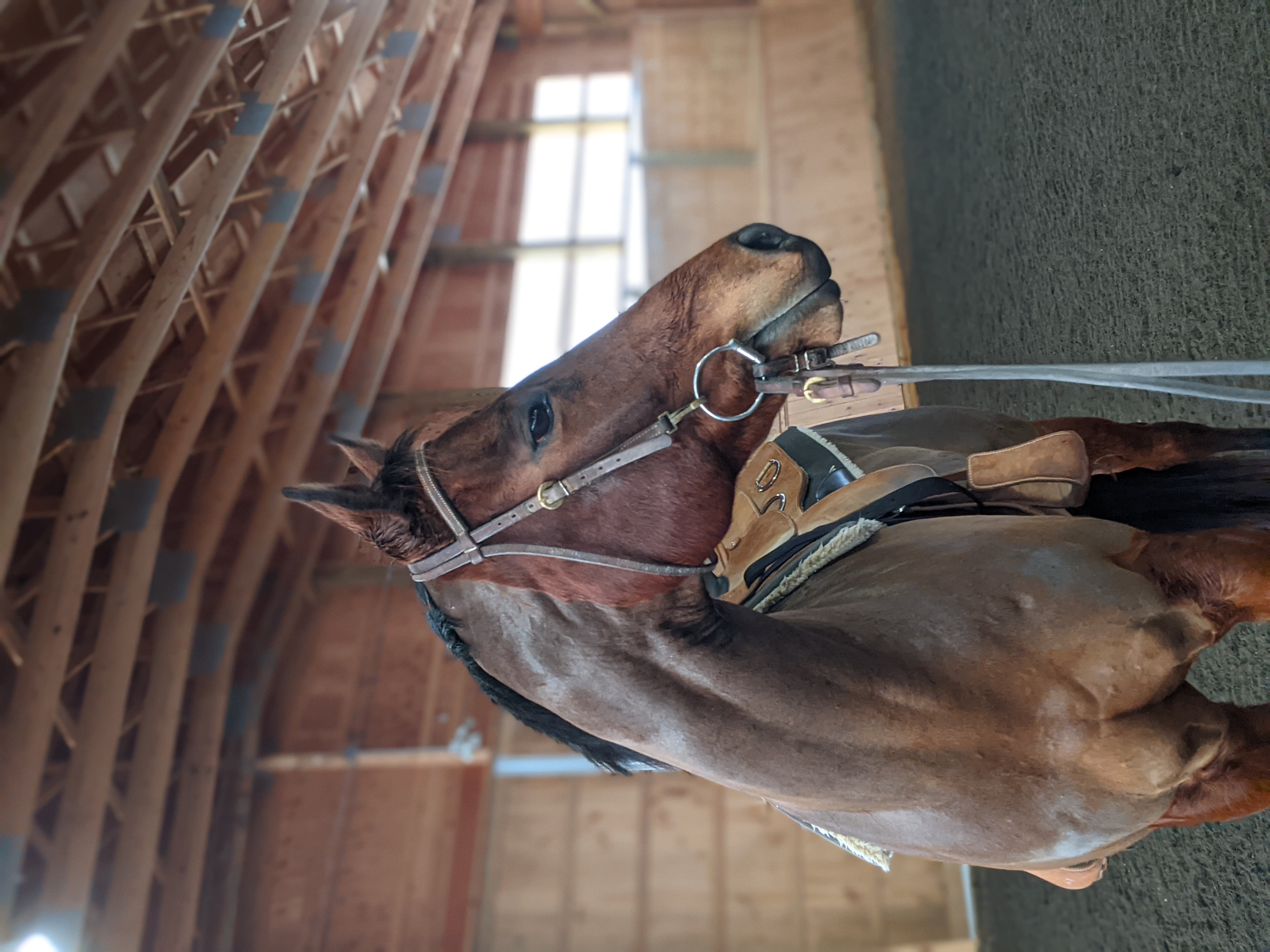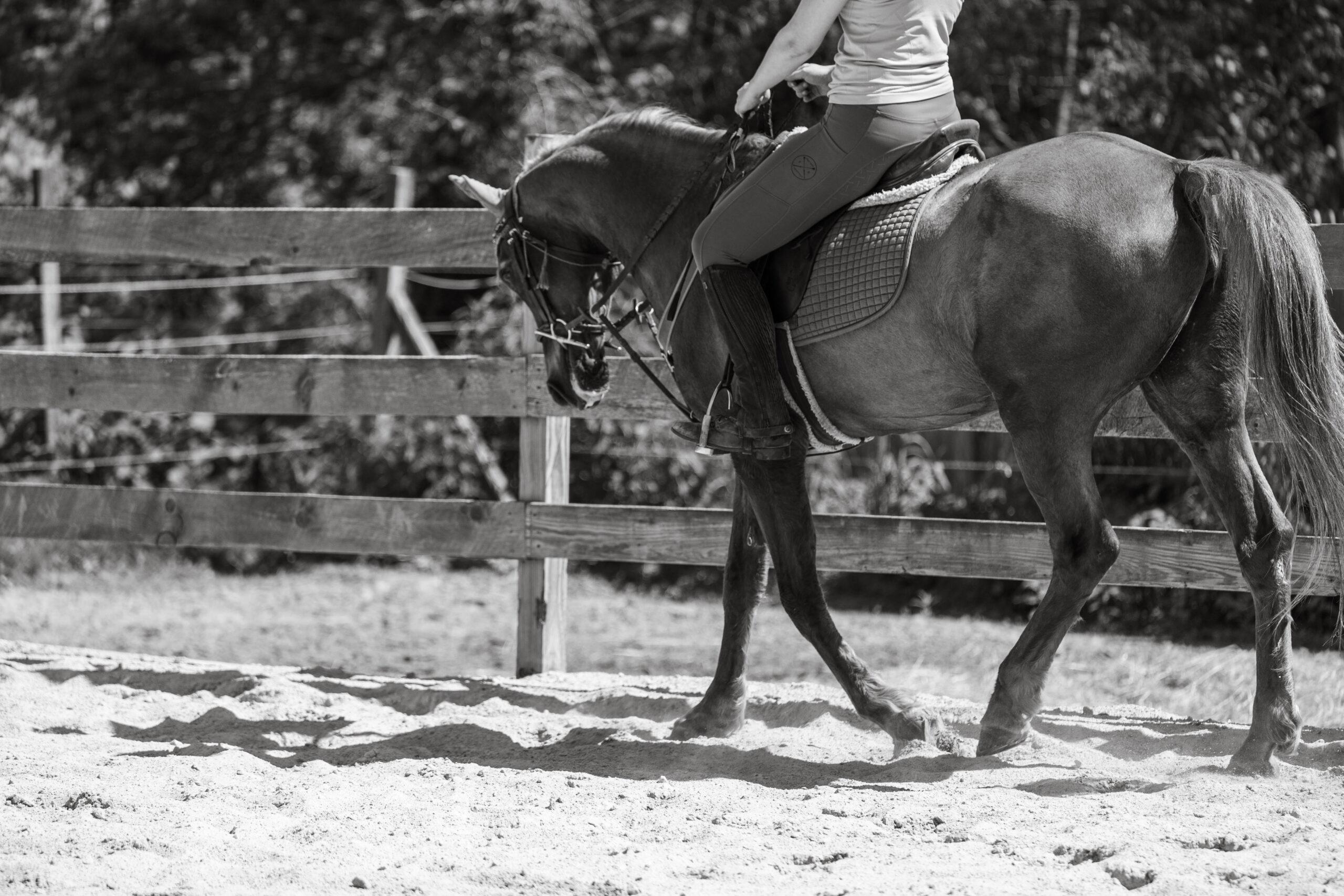Spring is finally here! But, you know the saying, “April showers bring May flowers.” And yet, it seems to rain way beyond April, at least where I live. When the weather finally starts to become mild enough to go outside without frozen finger tips equestrians get excited! Then, it rains.
So, what should you do when it rains? Can you still ride your horse? Under the right circumstances, you can still enjoy a nice ride even in the rain. There are important factors to consider like slippery ground, properly caring for your tack and preventing your horse from catching a chill.
You’ll also need to know what weather conditions make it unsafe to ride. In this article we’ll discuss how to decide if it’s ok to ride in the rain and tips for riding in inclement weather.
Temperature & Weather Conditions
The first thing to consider when it comes to riding your horse in inclement weather is the type(s) of precipitation and if there is thunder and lightening. If there is lightening, you should absolutely not ride your horse, and if you’re already riding you should head in to the barn immediately. Remember as a child learning to stay low to the ground if you happen to be in an open area during lightening. A wide open arena with no protection on a horse is a dangerous place to be. Additionally, lightening could spook your horse and cause a fall or injury. And, since lightening that’s close by is typically followed by thunder, even the bravest of horses could become scared.
If you’re dealing with heavy down pours, loud thunder, hail or freezing rain it’s best to avoid riding. Riding in rain is one thing but getting completely drenched or hit by hail and freezing rain will be just as unpleasant for your horse as it will be for you.
Additionally, you’ll need to check the temperature. If it is a cold winter day and your horse has a long coat which will be hard to dry it may not be a good idea to go for a ride. However, if the weather is mild and the rain is light to moderate, riding might be perfectly enjoyable for you and your horse.
Ultimately, riding in the rain can be beneficial for teaching your horse to ride in various conditions or to go through puddles. It can also be a lot of fun.
Wet Or Slippery Footing
One risk of horseback riding in the rain is slippery footing. Depending on where you plan to ride the footing may become slick and dangerous.
Consider the type of footing you will be riding on whether it be grass, sand, arena footing, dirt out on the trail or other and think about how the footing is when wet.
If you make the determination that it’s ok to ride, start slow and evaluate the conditions once you’re mounted. For example, if the footing looks rideable and doesn’t seem slippery under foot, you’ll still need to assess it once you start riding. Start by walking and pay attention to if your horse’s feet are sliding. If the ground is slick and you’re moving fast you’re more likely to have an accident.
Horse Care In Wet Weather
It’s important to make sure you dry your horse as thoroughly as you can after a wet ride. Especially if the temperatures are chilly, a wet horse can easily catch a chill.
You’ll need to make sure to cool your horse out properly and you may need to use a fleece cooler after your ride to keep him warm. A fleece cooler will help your horse cool down slowly to avoid any health issues. I love this cooler from Horze.com. And they have lots of other great coolers and quarter sheets as well.

You can also ride with rain gear to help keep your horse dry during a rainy ride. Try using a waterproof quarter sheet to keep your horse dry while you ride unless it’s warm out.
Protecting Your Tack
Another important aspect of riding in the rain is to take good care of your tack. You can keep your tack covered while riding in the elements but there’s still a chance it will get wet.
After riding in the rain you’ll want to let your tack dry so don’t put a cover on your saddle while it’s still wet. It’s also a good idea to clean and condition your tack before you put it away. As you likely already know, tack can be very expensive to replace so you’ll want to avoid damaging the leather or causing it to crack.
Keeping Yourself Dry
Most equestrians tend to dress in layers especially during fall and spring when there are temperature changes throughout the day. Make sure if you plan to ride in the rain that you wear the appropriate layers for the temperature as well as water proof gear.
Keeping yourself dry especially when the weather is chilly is just as important as how you care for your horse. And, bring spare clothes including extra shoes to the barn with you in case you do get wet. Doing barn chores and caring for your horse in wet clothing and soggy shoes after getting soaked is no fun.
Renting An Indoor
If you don’t have access to an indoor arena at your farm but don’t want to miss out on riding throughout the wet season, you can look into arena rentals in your area. A lot of farms offer the use of their indoor to outside riders for a small fee. Some farms will allow you to pay a monthly flat fee to use the indoor at will and other charge per session. You may need to work around the owner or trainer’s schedule as well.
Just remember, riding in an indoor in the loud rain can be difficult too so plan accordingly. If your horse is very spooky it may be a challenge to acclimate them to a new arena during a storm or heavy rain. You’ll also need to plan for road conditions if you want to trailer your horse off property in inclement weather.
And lastly, when riding at someone else’s facility remember to be courteous and follow their barn rules. In this guide to arena etiquette I’ve outlined some common best practices to help you maintain a friendly relationship with barn owners and managers.

I hope you found this article helpful! If you did, please share it.

